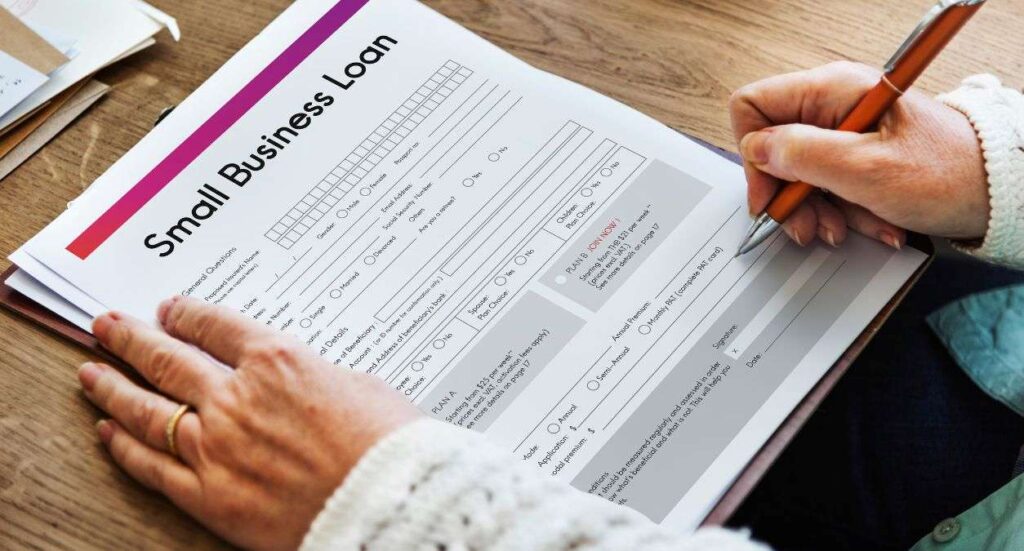If you’re operating a business in the UK or thinking of starting one up it is sensible to be aware of VAT, Value added Tax and how it works in the UK. Not only can it provide a competitive advantage and credibility your business is operating at a certain level, but it is also a legal requirement, to comply with relevant tax laws.
In this overview on VAT, we’ll cover a list of the essential information you need to know about registering for VAT including how you can reclaim VAT and what the penalties are for failing to comply with the VAT process.
How does VAT work in the UK?
In the UK, VAT is a significant source of government revenue and plays a crucial role in the country’s tax system. VAT is a consumption tax levied on the value added to goods and services at each stage of production or distribution. These are the main points to know on VAT in the UK:
Taxable Supplies: VAT is charged on most goods and services provided by VAT-registered businesses in the UK. These goods and services are referred to as “taxable supplies.”
Registration Threshold: Businesses must register for VAT with HM Revenue and Customs (HMRC) if their taxable turnover exceeds the VAT registration threshold. As of 2024, the threshold is £90,000 over a 12-month period. Businesses that expect their turnover to exceed this threshold within the next 30 days must also register for VAT.
What are the different VAT rates in the UK?

Standard Rate: The standard rate is currently 20% (as of 2024). This applies to most goods and services.
Reduced Rate: Some goods and services are subject to a reduced rate of 5%, such as domestic fuel and power, children’s car seats, and some energy-saving materials.
Zero Rate: Certain goods and services are zero-rated, meaning they are subject to a 0% VAT rate. This includes essentials like food, children’s clothes, books, and newspapers.
Exempt: Some goods and services are exempt from VAT altogether, such as certain financial and insurance services, education, and healthcare.
VAT Invoices: VAT-registered businesses must provide VAT invoices for all taxable goods and services they supply to other VAT-registered businesses. These invoices must include specific information, including the supplier’s VAT registration number, the amount of VAT charged, and the total amount including VAT.
VAT Returns: VAT-registered businesses are required to file VAT returns with HMRC regularly, usually quarterly. These returns detail the amount of VAT charged on sales (output tax) and the amount of VAT paid on purchases (input tax). The difference between output tax and input tax is either paid to HMRC or refunded.
Input Tax: VAT-registered businesses can reclaim VAT they have paid on business purchases and expenses, known as input tax. This reduces the amount of VAT payable to HMRC.
Output Tax: VAT-registered businesses must charge VAT on their taxable sales, known as output tax. The VAT collected on sales is then paid to HMRC.
VAT Registration Number: Upon registration for VAT, businesses are issued a unique VAT registration number by HMRC. This number must be displayed on VAT invoices, websites, and other business documents.
Compliance and Penalties: Businesses must comply with VAT regulations and keep accurate records of their VAT transactions. Failure to comply with VAT rules can result in penalties, fines, and legal action by HMRC.
Overall, VAT is a crucial component of the UK tax system, generating significant revenue for the government while affecting businesses and consumers alike. Understanding and complying with VAT regulations is essential for businesses operating in the UK.
When do I register for VAT?
You should register for VAT with HM Revenue and Customs (HMRC) if your taxable turnover exceeds the VAT registration threshold or if you expect it to exceed the threshold in the next 30 days. Here are some key points to consider regarding when to register for VAT:
VAT Registration Threshold
As of 2024, the VAT registration threshold in the UK is £90,000 of taxable turnover in a rolling 12-month period. If your taxable turnover exceeds this threshold, you must register for VAT.
Expected Threshold Exceedance
If you expect your taxable turnover to exceed the VAT registration threshold within the next 30 days, you must also register for VAT. This could happen if your business is growing rapidly or if you anticipate a significant increase in sales.
Voluntary Registration
Even if your turnover is below the VAT registration threshold, you can choose to voluntarily register for VAT. There are several benefits to being VAT registered and why you might consider voluntary registration, such as:
Reclaiming VAT on business purchases
Voluntarily registered businesses can reclaim VAT on their business expenses, which can be beneficial, especially if you make significant purchases.
Perceived credibility
Being VAT registered can enhance your business’s credibility in the eyes of customers and suppliers.
Dealing with VAT-registered customers
If your customers are VAT registered, they may prefer to deal with suppliers who are also registered for VAT to simplify their own VAT accounting.
Timing of Registration
You must register for VAT within 30 days of reaching the VAT registration threshold or becoming aware that you will exceed the threshold within the next 30 days. Failure to register on time can result in penalties from HMRC.
Multiple Businesses
If you run multiple businesses, you need to consider the combined turnover of all your businesses when determining whether you need to register for VAT. If the combined turnover exceeds the VAT registration threshold, you must register all the businesses for VAT.
Special Cases
Certain businesses have specific rules regarding VAT registration, such as those involved in distance selling, imports and exports, or specific industries like construction. It’s essential to understand any special rules that may apply to your business.
Seek Advice
If you’re unsure whether you need to register for VAT or if voluntary registration is appropriate for your business, it’s advisable to seek advice from a tax advisor or accountant. They can provide guidance based on your specific circumstances and help you understand the implications of VAT registration for your business.
How to register for VAT?

Registering for VAT in the UK involves several steps, but the process is relatively straightforward. Here’s how you can register for VAT with HM Revenue and Customs (HMRC):
Check Eligibility
Before registering for VAT, ensure that your business meets the criteria for VAT registration. This typically includes exceeding the VAT registration threshold (£90,000 of taxable turnover in a rolling 12-month period) or expecting to exceed the threshold within the next 30 days.
Gather Information
Before starting the registration process, gather all the necessary information and documents you’ll need. This may include:
- Your business details, including name, address, and contact information.
- Your Unique Taxpayer Reference (UTR), if you’re already registered for other taxes.
- Details about your business activities and turnover.
- Bank account details for your business.
- Information about any partners, directors, or owners of the business.
Choose Registration Method
Decide how you want to register for VAT. You can register online, by post, or through an agent (such as an accountant). Online registration is generally the quickest and most convenient method.
Register Online
To register online for VAT, visit the HMRC website and navigate to the VAT registration page. You’ll need to create a Government Gateway account if you don’t already have one. Follow the instructions to complete the online registration form, providing all the necessary information about your business.
Register by Post
If you prefer to register by post, you can download the VAT1 form from the HMRC website. Fill out the form with all the required information and send it to the address provided on the form. Note that registering by post may take longer than registering online.
Await Confirmation
Once you’ve submitted your VAT registration application, HMRC will process it, which usually takes a few weeks. You’ll receive a VAT registration certificate confirming your VAT registration number and the effective date of registration.
Start Charging VAT
After you receive your VAT registration certificate, you can start charging VAT on your taxable sales. Make sure to update your invoices and other business documents with your VAT registration number.
Submit VAT Returns
Once registered for VAT, you’ll need to submit VAT returns to HMRC regularly, usually quarterly. These returns detail the amount of VAT you’ve charged on your sales (output tax) and the amount of VAT you’ve paid on your purchases (input tax).
Keep Records
Maintain accurate records of all your VAT transactions, including invoices, receipts, and VAT returns. HMRC may request to inspect these records at any time.
Compliance
Ensure that you comply with all VAT regulations and requirements, including issuing VAT invoices, keeping records, and paying VAT on time. Non-compliance can result in penalties and fines from HMRC.
What is the threshold to pay VAT?

The threshold to pay Value Added Tax (VAT) is the level of taxable turnover at which businesses are required to register for VAT with HM Revenue and Customs (HMRC) in the UK. Once a business’s taxable turnover exceeds this threshold, they must charge VAT on their taxable sales and submit VAT returns to HMRC.
As of 2024, the VAT registration threshold in the UK is £90,000 of taxable turnover in a rolling 12-month period. This means that if a business’s taxable turnover exceeds £85,000 within any consecutive 12-month period, they are required to register for VAT with HMRC.
It’s important to note that the threshold applies to taxable turnover, which includes the total value of all taxable sales made by the business. Taxable turnover does not include exempt supplies, such as certain financial and insurance services, education, and healthcare.
Once registered for VAT, businesses are required to charge VAT on their taxable sales (output tax) and can reclaim VAT on their business expenses (input tax). They must then submit VAT returns to HMRC on a regular basis, usually quarterly, detailing the VAT they’ve charged and paid.
If a business’s taxable turnover falls below the deregistration threshold, they may be eligible to deregister for VAT. As of 2024, the deregistration threshold in the UK is £88,000 of taxable turnover in a rolling 12-month period. If a business’s taxable turnover falls below this threshold, they can apply to deregister for VAT with HMRC.
What are penalties for failing to comply with VAT requirements?
Failing to comply with VAT requirements in the UK can result in various penalties and consequences imposed by HM Revenue and Customs (HMRC). These penalties are designed to encourage compliance with VAT regulations and ensure the integrity of the tax system. Here are some potential penalties for failing to comply with VAT requirements:
Late Registration Penalty
If you fail to register for VAT on time after exceeding the VAT registration threshold or becoming liable to register, HMRC may impose a late registration penalty. The amount of the penalty depends on the length of the delay and the amount of VAT owed.
Late Filing Penalty
If you fail to submit your VAT return by the deadline, HMRC may impose a late filing penalty. The amount of the penalty depends on the lateness of the submission and your turnover.
Late Payment Penalty
If you fail to pay the VAT owed by the deadline, HMRC may impose a late payment penalty. The amount of the penalty depends on the amount of VAT owed and how late the payment is.
Inaccuracy Penalties
If you submit an inaccurate VAT return or provide incorrect information to HMRC, you may be liable for inaccuracy penalties. The amount of the penalty depends on the severity of the inaccuracy and whether it was deliberate or not.
Failure to Notify Penalty
If you fail to notify HMRC of changes in your business circumstances that affect your VAT registration status, such as changes in turnover or business structure, you may be liable for a failure to notify penalty.
Civil Penalties
HMRC has the authority to impose civil penalties for serious breaches of VAT regulations, such as deliberate evasion or fraud. Civil penalties can be substantial and may include financial penalties, seizure of assets, or criminal prosecution.
Interest Charges
In addition to penalties, HMRC may also charge interest on any outstanding VAT owed. Interest is charged from the date the VAT was due until the date it is paid in full.
It’s important to note that penalties and charges can vary depending on the circumstances of each case, and HMRC has discretion in determining the appropriate penalty. However, businesses are generally expected to take reasonable care to comply with VAT requirements, and failure to do so can result in financial penalties and other consequences. If you’re unsure about your VAT obligations or need assistance with compliance, it’s advisable to seek advice from a tax advisor or accountant.
Get Small Business liability insurance with Protectivity.
Whether you’re an established business or starting out, knowing about the VAT registration process and rules can help avoid expensive fines and tax bills in the future. Whilst independent of VAT having appropriate insurance can also provide financial protection in unforeseen circumstances, avoiding costly claims in the event they occur.
Protectivity’s small business insurance has been specifically created to support you if claims are brought against your business. Public liability is automatically included and protects you if you’re sued by a third party; for example, for an injury or property damage suffered by a client or member of the public. There’s also employers’ liability for anyone with a team, ensuring that you’re protected against claims from workers who become injured or ill.
Find out more and get an instant quote suited to your needs.
Get Small Business Insurance from Protectivity
*Disclaimer – This blog has been created as general information and should not be taken as advice. Make sure you have the correct level of insurance for your requirements and always review policy documentation. Information is factually accurate at the time of publishing but may have become out of date.
Last updated by

















